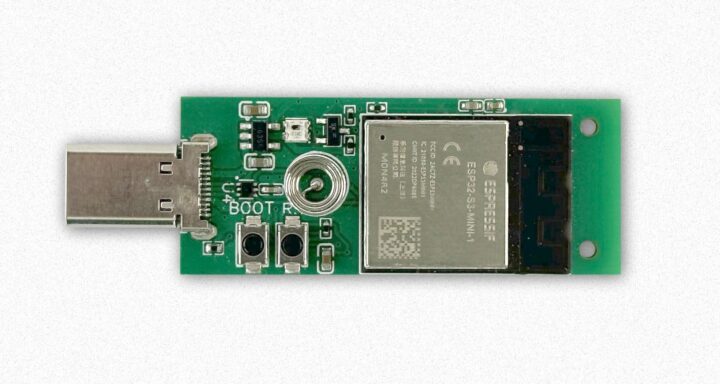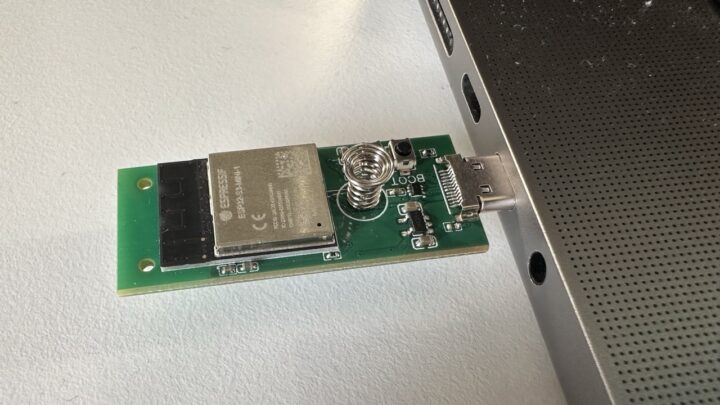The Pendrive S3 is an ESP32-S3 development board in a USB stick enclosure with 128MB of flash memory and an unusual capacitive touch button. The Espressif ESP32-S3-MINI-1 module on the board integrates an Xtensa dual-core 32-bit LX7 microprocessor with support for 2.4GHz Wi-Fi and Bluetooth 5 (low-energy).
The device features a capacitive touch button that can be used to trigger actions by touching the enclosure. The capacitive button isn’t visible on the exterior of the device, which helps the device maintain a low profile. You may be interested in Dani Eichhorn’s article on how he came up with the idea of using a spring for the capacitive touch button.
The Pendrive S3 stick can be used as a BadUSB device for hacking and penetration testing purposes. With the aid of SuperWiFiDuck, it can perform keystroke injection attacks. All scripts can be managed and controlled wirelessly via a web interface, and run immediately when the device is plugged in, or when the onboard button is pressed. Other potential applications include a memory stick with cloud sync, a Wi-Fi dongle, and a password manager.
It uses the open-source USB stack, TinyUSB, to emulate several device classes such as Human Interface Device (mice, keyboards), Mass Storage, Video, and Network. It is supported by CircuitPython, a subset of Python that is lightweight and optimized for microcontrollers.
Other interesting devices in a USB stick form factor include the Waveshare RP2040-GEEK, the T-Dongle ESP32-S2, and Ovrdrive USB.
ThingPulse Pendrive S3 specifications:
- Wireless module – ESP32-S3-MINI
-
- CPU – Dual-core Xtensa LX7 @ 240 MHz,
- Wireless – 2.4GHz Wi-Fi and Bluetooth 5 (LE)
- Memory/Storage – 512 KB SRAM, 8MB on-chip flash,
- PCB antenna
- Storage – 128MB flash memory, addressable via SDIO/MMC or SD card interface, in 1-bit or 4-bit mode
- USB – USB-C male connector
- Misc
- WS2812B addressable RGB LED
- Capacitive touch button (Spring)
- USB drive plastic enclosure
The Pendrive S3 is priced at $25 on the ThingPulse website. It is not a perfect device, but it can be useful for tinkering and experimentation. CNX readers can get a 20% discount by using the coupon code cnx-pendrive-s3 during checkout.

Tomisin is a writer specializing in hardware product reviews, comparisons, and explainers. He is very passionate about small form factor and single-board computers.
Support CNX Software! Donate via cryptocurrencies, become a Patron on Patreon, or purchase goods on Amazon or Aliexpress






